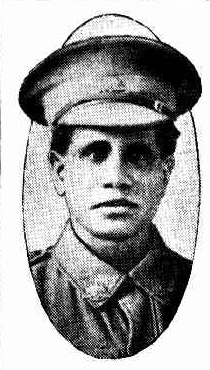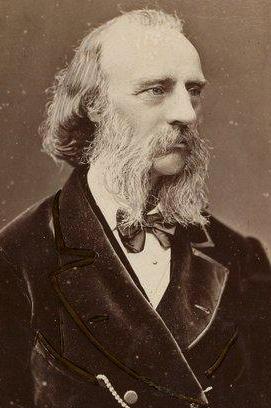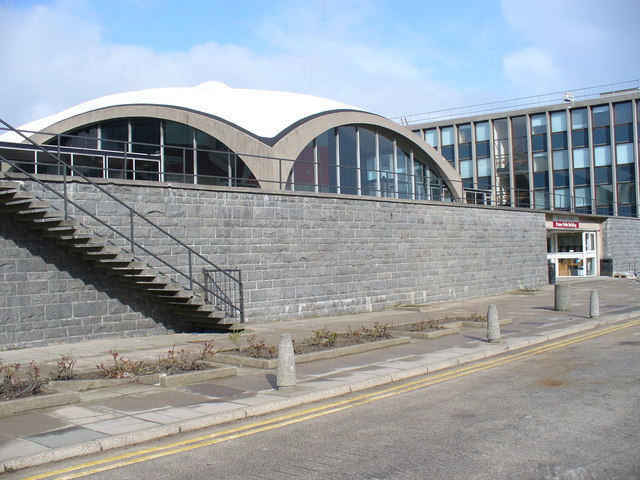|
Thomas Wilson (economist)
Thomas Wilson (23 June 1916 – 27 July 2001) was a 20th-century British economist, who spoke out strongly against the introduction of the poll tax in Britain. Life He was born in Belfast on 23 June 1916, the son of John Bright Wilson, an Ulster Protestant and was educated at the Methodist College in Belfast. He then studied History at Queen's College, Belfast before winning a place at Oxford University where he specialised in Economics graduating MA. Then obtained a doctorate (PhD) at the University of London under Evan Durbin and Nicholas Kaldor. Although a socialist and communist-sympathiser, his observations on the Russian delegates at the World Youth Congress of 1938 in New York led him to conclude the system as a tyranny. In the Second World War he worked first for the Ministry of Economic Warfare and Aircraft Production in Whitehall, then became an advisor to Winston Churchill's statistics branch under Lord Cherwell. Desiring more active duties in 1944 he was given leave t ... [...More Info...] [...Related Items...] OR: [Wikipedia] [Google] [Baidu] |
Poll Tax
A poll tax, also known as head tax or capitation, is a tax levied as a fixed sum on every liable individual (typically every adult), without reference to income or resources. Head taxes were important sources of revenue for many governments from ancient times until the 19th century. In the United Kingdom, poll taxes were levied by the governments of John of Gaunt in the 14th century, Charles II in the 17th and Margaret Thatcher in the 20th century. In the United States, voting poll taxes (whose payment was a precondition to voting in an election) have been used to disenfranchise impoverished and minority voters (especially under Reconstruction). By their very nature, poll taxes are considered regressive. Many other economists brand them as highly harmful taxes for low incomes (100 monetary units of a fortune of 10,000 represent 1% of said wealth, while 100 monetary units of a fortune of 500 represents 20%). Its acceptance or "neutrality" (there is no truly neutral tax on the p ... [...More Info...] [...Related Items...] OR: [Wikipedia] [Google] [Baidu] |
Kilmahog
Kilmahog ( gd, Cille MoChùig: Cell of St. Chug) is a hamlet situated half a mile to the west of Callander, Scotland. Toponym Kilmahog is supposedly derived from the Scottish Gaelic, Cille MoChùig, meaning cell of Chug (a church dedicated to Saint Chug). Although a medieval chapel was located at Kilmahog, the identity of Chug is not authentically known. Place name scholars have proposed that this could be Saint Cuaca from Meath in Ireland. Alternative evidence suggests that this Saint is the sixth century Saint Machutus (who may have originally been named ''Mahagw''). Geography Kilmahog lies on the Garbh Uisge, also known as the "River Leny", at the junction of the Trossachs and Lochearnhead roads. The village today consists of a few houses and two woollen mill retail facilities (the Trossachs Woollen Mill and the Kilmahog Woollen Mill,) with farm land to the north and forestry to the south. One of the woollen mills retains a working loom. There is a local pub, near the site ... [...More Info...] [...Related Items...] OR: [Wikipedia] [Google] [Baidu] |
Margaret Thatcher
Margaret Hilda Thatcher, Baroness Thatcher (; 13 October 19258 April 2013) was Prime Minister of the United Kingdom from 1979 to 1990 and Leader of the Conservative Party (UK), Leader of the Conservative Party from 1975 to 1990. She was the first female British prime minister and the longest-serving British prime minister of the 20th century. As prime minister, she implemented economic policies that became known as Thatcherism. A Soviet journalist dubbed her the "Iron Lady", a nickname that became associated with her uncompromising politics and leadership style. Thatcher studied chemistry at Somerville College, Oxford, and worked briefly as a research chemist, before becoming a barrister. She was List of MPs elected in the 1959 United Kingdom general election, elected Member of Parliament for Finchley (UK Parliament constituency), Finchley in 1959 United Kingdom general election, 1959. Edward Heath appointed her Secretary of State for Education and Science in his H ... [...More Info...] [...Related Items...] OR: [Wikipedia] [Google] [Baidu] |
Douglas Grant
Douglas Grant (1885 – 4 December 1951) was an Aboriginal Australian soldier, draughtsman, public servant, journalist, public speaker, and factory worker. During World War I, he was captured by the German army and held as a prisoner of war at Wittenberg, and later at Wünsdorf, Zossen, near Berlin. Early life and career Grant was born around 1885 into the rainforest Indigenous Nations of north Queensland near Malanda on the Atherton Tablelands. Grant's repatriation file (Service Number 6020) records his birth as 5 January 1887. In 1887, as an infant orphaned as a result of a massacre of Aboriginal people by colonial police during the Australian Frontier Wars, he was 'rescued' by taxidermists Robert Grant and E.J. Cairn, who were in the region on a collecting expedition for the Australian Museum. The Aboriginal child was later fostered and renamed Douglas by Robert Grant and his wife Elizabeth. Then, contrary to the laws of the time they smuggled him aboard the steamer ship ... [...More Info...] [...Related Items...] OR: [Wikipedia] [Google] [Baidu] |
Neil Campbell (chemist)
Neil Campbell FRSE FRSC OBE (29 August 1903 – 24 July 1996) was a Scottish chemist and amateur athlete. He served as Vice President of the Royal Society of Edinburgh from 1972 to 1975. He was associated with the University of Edinburgh for 74 years of his life. Life He was born in Edinburgh on 29 August 1903 into a family of Edinburgh actuaries, and his early education was at George Watson’s College before studying chemistry at the University of Edinburgh. He graduated with a BSc in 1926, continuing his studies with a PhD, on 'Optical activity of electrolytes' graduating in 1930. After a brief period studying at University of Tübingen in south-west Germany 1930/1, he returned to the University of Edinburgh as a lecturer in chemistry from the summer of 1931. He became a Senior Lecturer in 1952 and a professor in 1967. He was a keen amateur runner and supporter of school athletics. At University he ran with Eric Liddell. He served as Chairman of the Edinburgh Union of Boys Cl ... [...More Info...] [...Related Items...] OR: [Wikipedia] [Google] [Baidu] |
Anthony Elliot Ritchie
Anthony Elliot Ritchie FRSE FRCPE LLD (30 March 1915–14 September 1997) was a 20th-century Scottish physiologist and educator. Life Ritchie was born at 20 Upper Gray Street, Edinburgh on 30 March 1915, the only son of Jessie Jane Elliot and James Ritchie FRSE. He was schooled at Edinburgh Academy from 1922 to 1930. He studied science at the University of Aberdeen graduating with an MA in 1933 and a BSc in 1936. He then studied medicine at the University of Edinburgh graduating with an MB ChB in 1940. He served in the Royal Army Medical Corps during the Second World War 1942 to 1945, attached to the Territorial Army. This role was both part-time and Edinburgh-based, allowing him to continue other academic pursuits. He was a Carnegie Research Scholar 1940-41 and from 1942 began lecturing in Physiology at the University of Edinburgh, being promoted to senior lecturer in 1946. In 1948 the University of St Andrews gave him a professorship, where he continued until 1969. In 19 ... [...More Info...] [...Related Items...] OR: [Wikipedia] [Google] [Baidu] |
Thomas Brumby Johnston
Thomas Brumby Johnston FRSE FRGS FSA (1814-1897) was a 19th-century Scottish geographer, cartographer, antiquary and pioneer photographer. In later life he served as the official Geographer to Queen Victoria. Life Johnston was born in Perth on 28 January 1814, the son of Alexander Johnston and his wife Isabel Keith. His older brother was Alexander Keith Johnston and in later life he went into partnership with him in printing atlases. In 1856 he was a founding member of the Photographic Society of Scotland and served as the society's secretary 1862 to 1865. He exhibited at least 14 photographs to the society on a mix of collodion and waxed paper prints. Subject matter ranged from James Hogg’s wife to Kinghorn harbour and Doune Castle. In 1867 he was elected a Fellow of the Royal Society of Edinburgh Fellowship of the Royal Society of Edinburgh (FRSE) is an award granted to individuals that the Royal Society of Edinburgh, Scotland's national academy of science and l ... [...More Info...] [...Related Items...] OR: [Wikipedia] [Google] [Baidu] |
Fraser Noble
Sir Thomas Alexander Fraser Noble (29 April 1918 – 21 August 2003) was a Scottish academic. He was former Vice-Chancellor of the University of Leicester and then Principal of the University of Aberdeen. Early life He was born in Cromdale in Strathspey, Scotland. His father was Simon Noble of Grantown-on-Spey in the former Moray, and his mother was Jeanie Graham from Largs in North Ayrshire. His father died when he was eight. He had a brother. He attended Nairn Academy. He went to the University of Aberdeen when aged only 16. He graduated with a degree in Classics in 1938. He did military service with the Black Watch (Royal Highland Regiment). Career University of Leicester In 1962 he became Vice-Chancellor of the University of Leicester at the age of 43. The University of Leicester now has the Fraser Noble Building. In 1962 the university had 1,500 students and two faculties of Arts and Sciences. By the time he left, the university had five faculties and 6,000 students. Tha ... [...More Info...] [...Related Items...] OR: [Wikipedia] [Google] [Baidu] |
Royal Society Of Edinburgh
The Royal Society of Edinburgh is Scotland's national academy of science and letters. It is a registered charity that operates on a wholly independent and non-partisan basis and provides public benefit throughout Scotland. It was established in 1783. , there are around 1,800 Fellows. The Society covers a broader selection of fields than the Royal Society of London, including literature and history. Fellowship includes people from a wide range of disciplines – science & technology, arts, humanities, medicine, social science, business, and public service. History At the start of the 18th century, Edinburgh's intellectual climate fostered many clubs and societies (see Scottish Enlightenment). Though there were several that treated the arts, sciences and medicine, the most prestigious was the Society for the Improvement of Medical Knowledge, commonly referred to as the Medical Society of Edinburgh, co-founded by the mathematician Colin Maclaurin in 1731. Maclaurin was unhappy ... [...More Info...] [...Related Items...] OR: [Wikipedia] [Google] [Baidu] |
Secretary Of State For Scotland
The secretary of state for Scotland ( gd, Rùnaire Stàite na h-Alba; sco, Secretar o State fir Scotland), also referred to as the Scottish secretary, is a Secretary of State (United Kingdom), secretary of state in the Government of the United Kingdom, with responsibility for the Scotland Office. The incumbent is a member of the Cabinet of the United Kingdom. The office holder works alongside the other Scotland Office#Ministers, Scotland Office ministers. The corresponding shadow minister is the Shadow Secretary of State for Scotland, shadow secretary of state for Scotland. The incumbent is Alister Jack, following his appointment by Prime Minister of the United Kingdom, Prime Minister Boris Johnson in July 2019 and who was reappointed by Liz Truss and Rishi Sunak. History Prior to devolution (before 1999) The post was first created after the Acts of Union 1707 created the Kingdom of Great Britain from the Kingdom of England and the Kingdom of Scotland. It was abolished in ... [...More Info...] [...Related Items...] OR: [Wikipedia] [Google] [Baidu] |
Glasgow University
, image = UofG Coat of Arms.png , image_size = 150px , caption = Coat of arms Flag , latin_name = Universitas Glasguensis , motto = la, Via, Veritas, Vita , mottoeng = The Way, The Truth, The Life , established = , type = Public research universityAncient university , endowment = £225.2 million , budget = £809.4 million , rector = Rita Rae, Lady Rae , chancellor = Dame Katherine Grainger , principal = Sir Anton Muscatelli , academic_staff = 4,680 (2020) , administrative_staff = 4,003 , students = () , undergrad = () , postgrad = () , city = Glasgow , country = Scotland, UK , colours = , website = , logo ... [...More Info...] [...Related Items...] OR: [Wikipedia] [Google] [Baidu] |





